Master Jetty Fishing With These Essential Tips!
Jetty fishing is a great way to get out in the open water and catch some of the best trophy-sized fish around. It’s also one of the easiest and most accessible forms of fishing, as jetty access is often free. But before you can start casting your line, there are some essential jetty fishing tips that every angler needs to know.
From choosing the right jetty for your needs, to selecting bait or lures and understanding when it’s best time and tide for successful catches – we have all of these helpful tips covered! So if you’re looking for advice on how to make your next outing as successful as possible, then read on!
Disclosure: We only endorse products we’ve personally used or that have come highly recommended by our trusted peers. We’re proud affiliates for some of the products on our site, and as such, we may get a small commission if you purchase through one of our referral links. However, there’s no extra cost to you. Check out our affiliate disclaimer in our Privacy Policy if you’d like to learn more.

Jetty Fishing Tip #1
Why is Jetty Fishing or Pier Fishing so Popular?
Jetty and pier fishing are popular among anglers for a variety of reasons. For starters, they provide easy access to the water without having to launch a boat or wade in from shore. This makes them ideal spots for beginners who may not have the necessary equipment or experience to venture out into deeper waters. Additionally, jetties and piers offer plenty of structure that attracts fish looking for food and shelter, making them great places to target species like bream, whiting, flathead, garfish and more.
The shallow depths near these structures also make it easier for anglers to spot their prey before casting their lines—a huge advantage when trying to land bigger catches! Plus, with so many different types of bait available at local tackle shops or even grocery stores nearby (think worms, shrimp and small minnows), jetty fishing is an affordable way to get started in the sport without breaking the bank.
Finally—and perhaps most importantly—jetty fishing can be incredibly rewarding due its ability to bring people together as they share stories about past catches while waiting patiently for bites on their lines. Whether you’re newbie just getting your feet wet or an experienced pro looking for some friendly competition on your next outing, there’s something special about gathering around a jetty or pier with friends old and new alike!
Jetty Fishing Tip #2
Best Time, Tide & Weather for Jetty Fishing

The most productive times are usually during high tides, which bring in more baitfish that attract larger game fish. The best time for jetty fishing depends on what type of fish you’re targeting. Generally speaking, early morning and late evening hours are usually more productive than mid-day when the sun is at its highest.
When it comes to tides, the best time to fish is during the incoming tide when water moves into the jetties. Incoming tides bring in more baitfish, which attracts larger game fish that are looking to feed.
Weather is also an important factor in successful jetty fishing. Rough seas can make conditions unsafe and difficult to fish, so always check the forecast before heading out. Windy days can also make it difficult to cast accurately and keep your line in the water.
Some great weather apps and websites include:
Jetty Fishing Tip #3
Jetty Fishing Tips
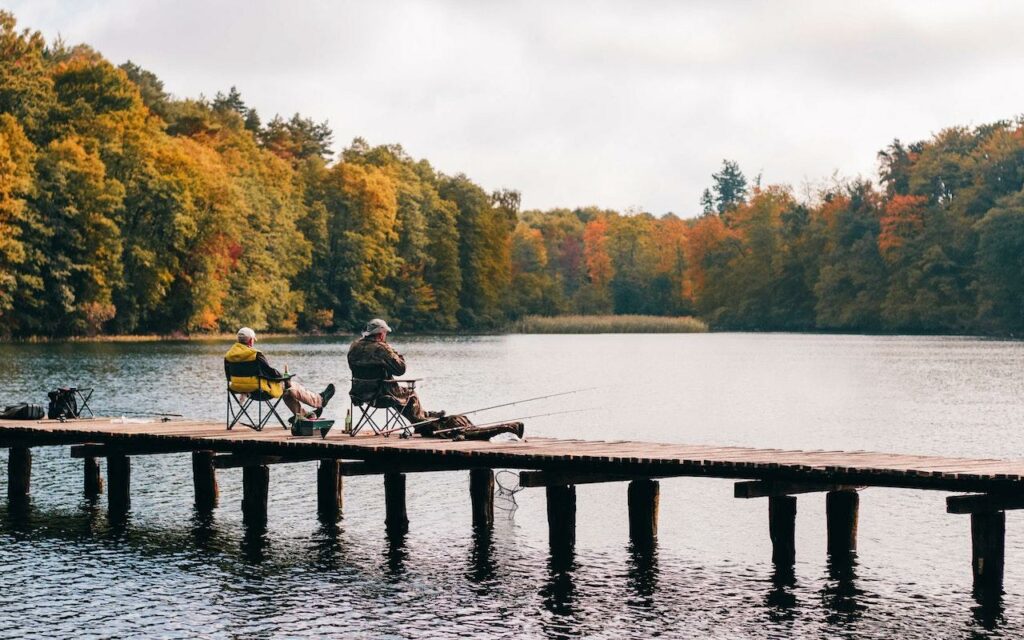
Jetty fishing is a great way to catch fish from the shore. Whether you’re in Australia or anywhere else, jetty fishing can be an exciting and rewarding experience. With the right techniques and gear, you can have a successful day of angling from the comfort of your local pier or dock.
Location
When it comes to jetty fishing, location is key. Look for jetties that are close to deep water with plenty of structure such as rocks and reefs nearby. These areas tend to attract more fish than open waters because they provide cover for baitfish and other food sources that larger species like tailor, snapper, mackerels etc, feed on.
Also look out for jetties near current lines – these are often prime spots for catching bigger gamefish like kingfish or tuna.
Gear
The type of gear you use will depend on what kind of fish you’re targeting but there are some basics that all anglers should consider when jetty fishing. A good rod-and-reel combo is essential; spinning reels work best since they allow greater casting distance while still providing enough power to handle larger catches if needed.
You’ll also need appropriate lures (such as soft plastics) depending on what type of fish you’re after; live bait works well too if available in your area. Lastly don’t forget about safety equipment such as life jackets and first aid kits just in case something goes wrong during your outing. All of these we cover a bit later on in the article.
Technique
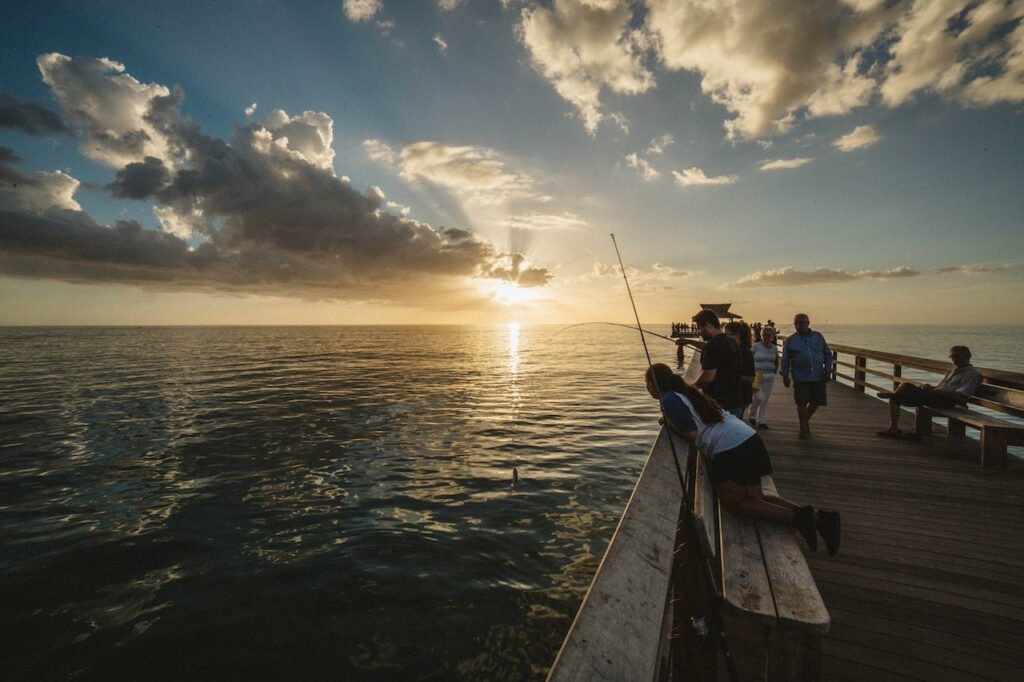
Once you have the right gear set up, it’s time to get down to business. Jetty fishing requires patience so take your time and be prepared to wait for a bite.
When fishing from a jetty you can either use lures or bait. Lures such as soft plastics and minnow imitation baits work well when targeting species like bream, whiting or flathead. Or for bigger gamefish try using surface lures to create a commotion that will attract predators lurking under the pier or dock.
When bait fishing from jetties, it is best to use fresh bait such as shrimp, worms, or small pieces of fish. If you’re unsure what type of bait to use, ask a local angler for their advice; they’ll be able to tell you the type and size of bait that works best in your area. We cover bait and lure fishing from jetties further down in this post in greater detail.
Overall, if you want to master jetty fishing, the best advice is simply to get out there and give it a go. With practice comes success so don’t be afraid to keep at it until you land that monster catch everyone dreams about!
Jetty Fishing Tip #4
What’s the Best Rod for Jetty Fishing?
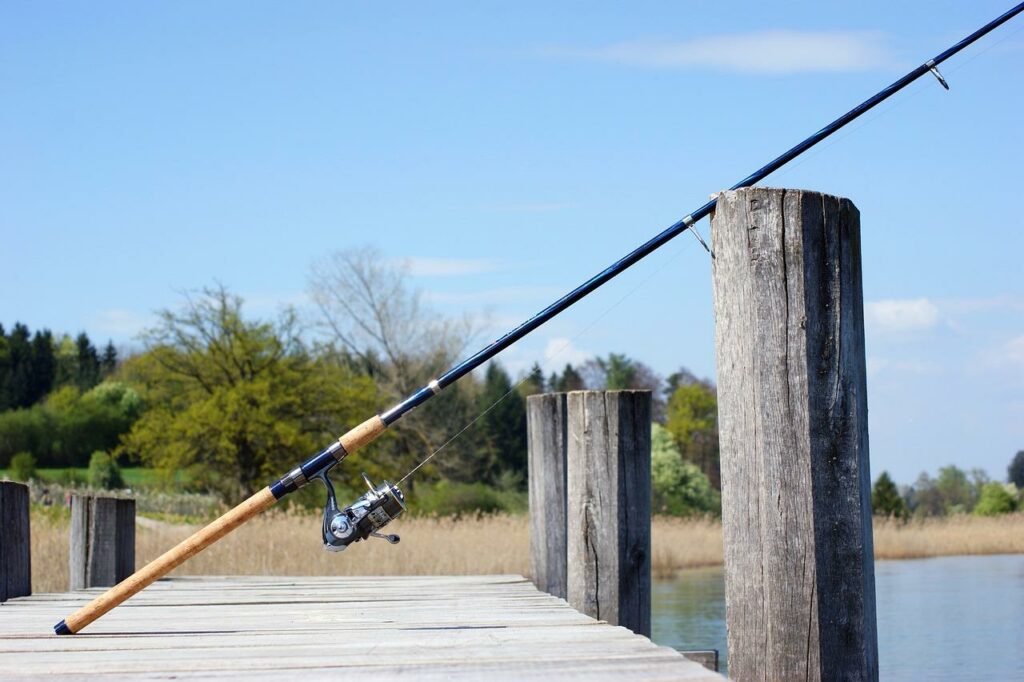
When it comes to fishing from a jetty, there’s no one-size-fits-all rod that will guarantee success. The best rod for you depends on your budget and what equipment you already have. Generally speaking, a 3-6kg rod made of either graphite or fibreglass is suitable for most anglers. But of course, the rod your use depends on the species your targeting and the type of bait you’re using.
Fibreglass rods are often preferred as they tend to be more forgiving if dropped or when pulling in larger fish over the railings. For those looking for something with greater reach, a 7-9 foot rod can be useful when trying to steer fish away from pylons and other obstacles. It also helps when casting bait under the jetty due to its light lead weighting capabilities.
Ultimately, whatever type of rod you choose should reflect your personal preferences and what feels comfortable in your hands while out on the water. So don’t feel like you need to invest in expensive gear right away – experiment with different types until you find something that works well for you!
Jetty Fishing Tip #5
What’s the Best Reel for Jetty Fishing?

When it comes to selecting a reel for jetty fishing, it’s important to remember that bigger isn’t always better. A larger reel with an oversized spool will only make it more difficult to cast and may cause line tangles if you’re not careful. Instead, opt for a mid-sized spinning reel with a line capacity of at least 150m. This will allow you to cast further, while still being able to handle the weight of larger fish.
A good quality reel with a smooth drag system is also essential if you’re wanting to land that prize catch. While a low-quality reel may be able to handle the strain of pulling in a heavy fish, its drag system won’t be as effective and you could lose your prize.
Finally, its important to note that the size of rod and reel you choose should be matched to the type of fishing you’re doing and the species you’re targeting. For example, if you’re targeting smaller fish like bream and whiting, a lighter 2000-4000 size reel will do the job. But if you’re after larger species such as flathead or kingfish, a bigger 4000-8000 size reel is recommended.
When it comes to jetty fishing, the possibilities are endless—but the success of your fishing trip ultimately comes down to having the right gear and using it correctly. next, we’ll talk about the right line to use for jetty fishing.
Jetty Fishing Tip #6
What’s the Best Line for Jetty Fishing?
Line selection is an important part of any successful fishing trip. Whether you’re jetty fishing or breakwater fishing, the type of line you choose can make a big difference in your success rate. Monofilament, fluorocarbon and braid are all popular choices for anglers, but each has its own advantages and disadvantages.
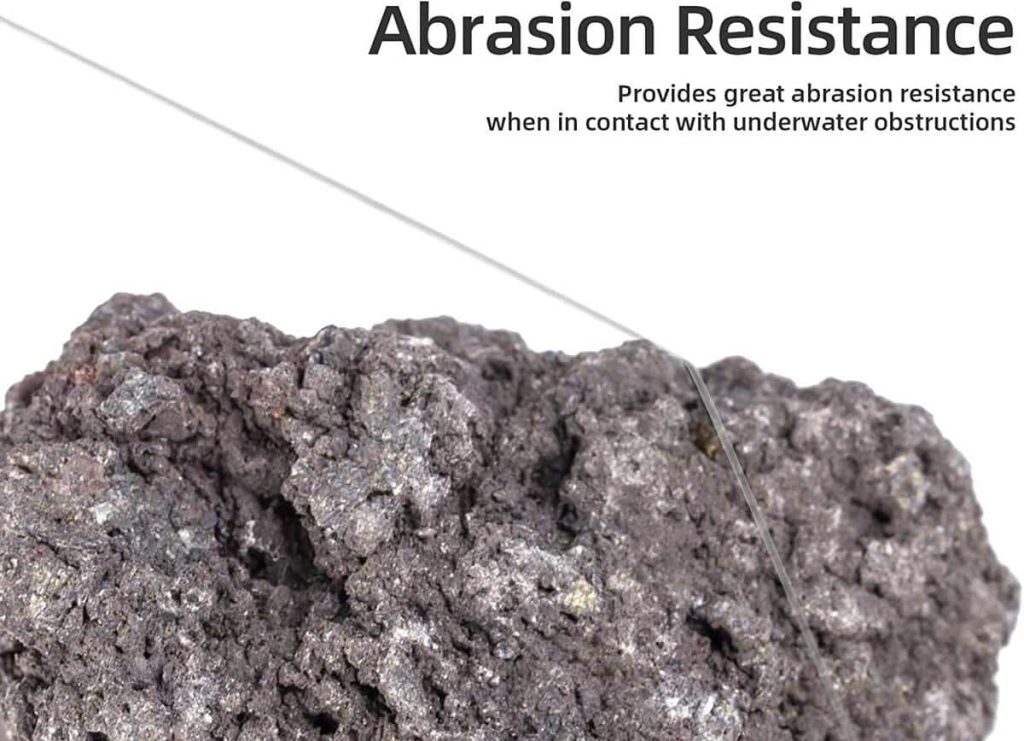
Monofilament:
Monofilament is one of the most common types of line used by anglers today. It’s relatively inexpensive and easy to use, making it a great choice for beginners or those on a budget. Monofilament also stretches more than other lines, which makes it ideal for absorbing shock when casting lures or fighting fish. However, monofilament isn’t as strong as some other lines and tends to fray easily if not handled properly.
Fluorocarbon:
Fluorocarbon is another popular option among anglers due to its strength and low visibility underwater. This makes it perfect for stealthy presentations when targeting wary fish species. The downside to fluorocarbon is that it’s more expensive than other lines and for that reason it is often used only as a leader material.
Our recommended mono and fluoro lines include:
- Berkley Trilene Big Game – Mono Line
- Hi-Seas Quattro Monofilament Line
- KastKing Monofilament Superior Fishing Line
- Stren High Impact Monofilament Fishing Line
- Daiwa J-Fluoro Fluorocarbon Leader
- Berkley Vanish Fluorocarbon
- Seaguar Blue Label Fluorocarbon Fishing Line Leader
- Spiderwire EZ Fluorocarbon Fishing Line
- Yo-Zuri H.D. Carbon Fluorocarbon Leader Line
Braid:

Lastly, braid is a great choice for anglers looking for maximum strength and sensitivity. It’s made of multiple strands of material woven together, making it stronger and more durable than mono or fluorocarbon. Braid also has very little stretch and offers great castability due to its small diameter. The downside to braid is that it’s more expensive than other lines and can be difficult to handle, causing more tangles.
At the end of the day, it all comes down to personal preference—so find what works best for you and stick with it!
Now that we’ve discussed the right gear for jetty fishing, let’s talk about some other important considerations when it comes to successful jetty fishing.
Our recommended braided lines include:
- Daiwa J-Braid 500M 8-Strand Woven Round Braid Line
- Daiwa J-Braid 300M 8-Strand Woven Round Braid Line
- VARIVAS HighGrade PE x8 Braid Line
- Hercules 8 Strands Braided Fishing Line
- KastKing Superpower Braided Fishing Line
Jetty Fishing Tip #7
Jetty Fishing With Lures
Jetty fishing with lures is a great way to target various fish species. Whether you’re after whiting, snapper, or kingfish, there are many different types of lures that can be used from the jetty. Before heading out on your next jetty fishing trip, it’s important to understand the basics of lure selection and how to use them effectively.
Soft Plastics

Soft plastics are a great choice as they can be worked in many different ways and can imitate a variety of prey. They can also be easily customized with colours, sizes and weights to imitate the prey you’re targeting. Soft plastics are typically used in shallow water or over structure, and can be effective for species such as bream, whiting and flathead.
Here are some of our recommended soft-plastic lures:
- ZMAN Grubz 2.5″ – 8 Pack Soft Bait – Motor Oil
- Berkley Gulp! Sandworm,Soft Bait – 2in | 5cm
- Berkley Gulp! Minnow Soft Fishing Bait Smelt 3″ – Qty. 12
- Z-MAN Slim SwimZ 2 1/2 inch Soft Plastic Paddle Tail Swimbait 8 Pack
- Z-MAN EZ ShrimpZ 3.5 Inch 4 Pack Unrigged Soft Plastic Shrimp Bait
- ZMAN 2.5″ Slim Swimz Lures- 8 Pack – Elaztech [Colour: Greasy Prawn]
- Zman 2.5 Grubz Electric Pink
Hard body Lures

Hard body lures, such as minnows and poppers, are a great choice for targeting bigger species such as kingfish, snapper and tailor. Hard body lures usually need to be worked a little differently than soft plastics, as they are designed to imitate fleeing prey.
It’s important to keep in mind that when fishing from a jetty, casting accuracy is key. If you can’t cast correctly, your chances of success will be much lower. If plan on lure fishing, braid is a great choice of line as it’s much thinner and allows for greater accuracy when casting.
Here are some of our recommended hard-body and popper lures:
- Atomic Hardz 38 Deep Crank Bait – Purple Shadow
- Atomic Hardz Shiner 85 Double Deep Fishing Lure #Rock Crab
- Daiwa 2020 Infeet Rolling Crank DR 32mm Floating Crankbait Fishing Lure #Blood Worm
- Cranka Lures Cranka Crab
- Savage Gear US-SG 3D Manic Shrimp
- Savage Gear 3D Shrimp RTF Saltwater Sinking Lure
- Savage Gear US-SG TPE Soft Vibe Sinking
- Band-It Series 300 Crankbait Bass Fishing Lures, Chartreuse Black Stripes, (BDT306)
- Yo-Zuri 3DR Shallow Crank Floating 2 3/4 Inch Shallow Diving Crankbait
Metal Lures

Metal lures such as jigs and spoons can be used to target deeper water fish like Australian salmon and tailor who cant resist their instincts to feed on moving prey. Metal lures can be cast out to deeper water and then retrieved back in with a steady motion. Vary the speed and depth of your retrieve to see what works best for the fish you’re targeting.
No matter what type of lure you choose, it’s important to match your gear with the size of the fish you’re targeting. Smaller soft plastics will work better on smaller species while larger hard bodies may be necessary if you’re after bigger game fish like kingfish or tuna. It’s also important to consider colour – some colours may attract more bites than others depending on conditions and time of day so experiment until you find what works best for your situation.
Here are some of our recommended metal lures:
Scenting your lures
Finally, don’t forget about scent-based lures which have become increasingly popular in recent years due to their effectiveness at attracting fish from long distances away. These scented baits come in all shapes and sizes so there is something out there for everyone. With all this information in mind, make sure you are properly prepared before heading out onto the jetty by having an assortment of different types of lures ready at hand; this way you will always have something that should do the trick no matter what kind of fish is biting.
Choosing the right lure is key to successful jetty fishing, so be sure to research what works best for your local waters. Now that you’ve got your lures sorted, let’s go over bait fishing from a jetty.
Jetty Fishing Tip #9
Jetty Fishing With Bait
Bait selection is an important part of successful jetty fishing. The right bait can make all the difference when it comes to catching fish, so it’s important to choose wisely. A variety of baits work well for jetty fishing, including live or dead bait, but ultimately the best bait will depend on the species you are targeting and the conditions.
Live Bait
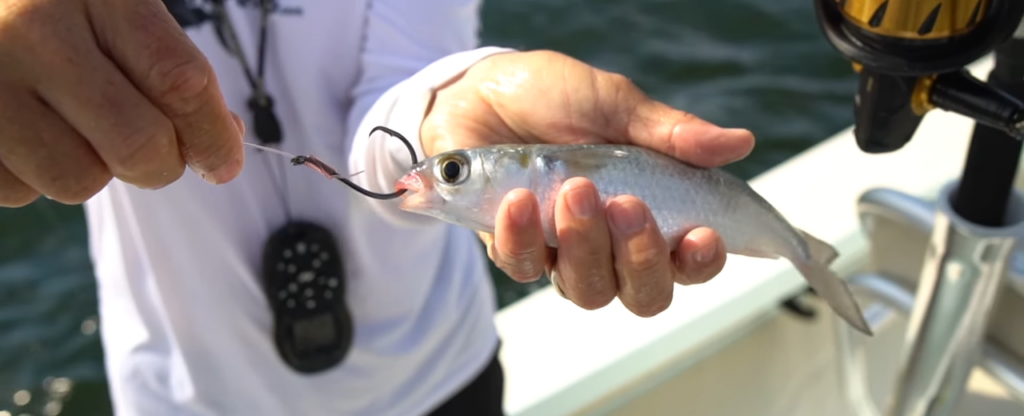
Live bait such as prawns, nippers, worms or yellowtail scad will usually be the most successful option as they can attract fish from greater distances and are generally more attractive than other types of bait. The commotion of a live bait will attract predatory fish to its presence and often result in more strikes.
Dead Bait

Dead baits are an effective option when targeting large predatory fish from shorelines or jetties since its scent will draw them in from greater distances than other types of baits would normally reach on their own accord. Dead bait often works best when targeting bottom-dwelling species such as snapper and flathead. Popular cut baits include squid strips, herring fillets , mackerel chunks, mullet, bonito strips , pilchards etc .
Choosing the right bait for your jetty fishing trip is essential for success. Knowing what types of bait work best in different areas and how to rig them correctly can make all the difference when it comes to landing that big catch. Now, let’s move on to discuss some of the best jetty fishing rigs.
Jetty Fishing Tip #10
Jetty Fishing Rigs
As an angler, having the perfect Jetty fishing rig can make or break your success out on the water. From novices to masters, it is essential that you select a setup specifically tailored for your approach to fishing. The options are vast – from different shapes and sizes of rigs – so carefully research what best meets your needs before making any decisions!
Paternoster Rig

This is one of the most popular jetty fishing rigs and it can be used for a variety of species. It’s composed of two droppers with baited hooks attached to a swivel, which is then connected to the main line. This rig allows you to fish two baits at different depths simultaneously with the option to adjust the distance between them as needed.
Running Sinker Rig
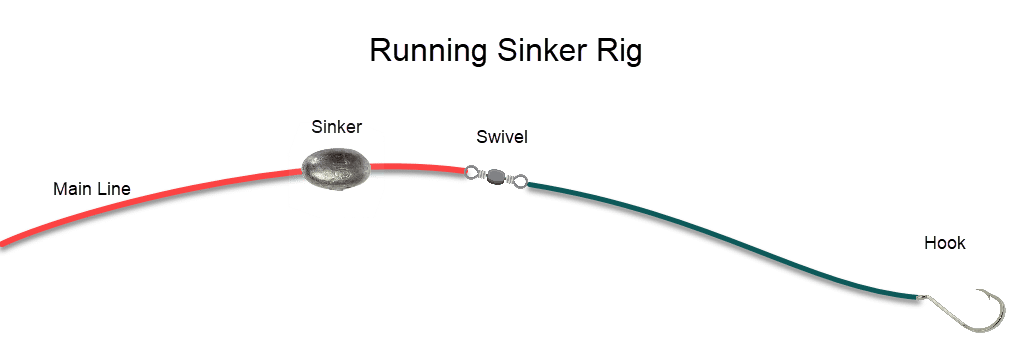
The running sinker rig is one of the most widely-used jetty fishing rig that is primarily used for targeting larger species such as Mulloway. It’s made up of a sinker threaded onto the mainline above a swivel, with its corresponding trace line then connected to the hook. This rig allows the mainline to move freely when the fish strikes, without the sinker causing tension.
Jetty Fishing Tip #11
Use Burley When Jetty Fishing
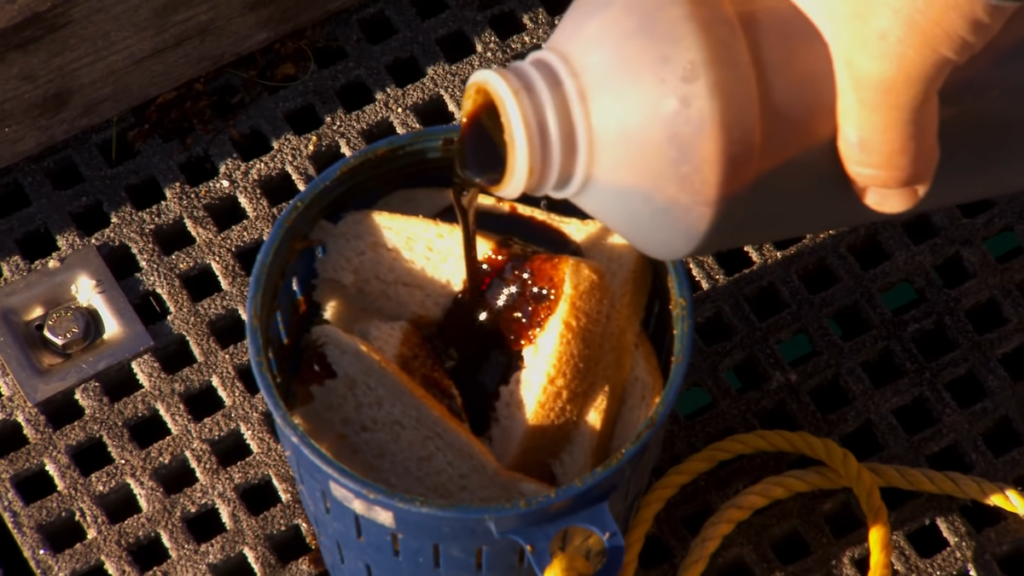
Burley is an essential tool for any jetty fisherman. It’s a type of bait that helps attract fish to the area and can make your fishing experience more successful. Burley comes in many forms, including pellets, cubes, and ground bait.
Pellets are small pieces of compressed fishmeal or other ingredients that dissolve quickly in water. They release a scent trail that attracts nearby fish, making them easier to catch. Cubes are larger chunks of burley that take longer to dissolve but also create a stronger scent trail than pellets do. Ground bait is made from finely ground particles mixed with oils and flavours designed to draw in even more fish over time.
When using burley at the jetty, it’s important to remember that you want the burley to be as close as possible to where you’re fishing so the smell will reach out into deeper waters where larger species may be lurking. Additionally, when adding new burley every 10-20 minutes or so while fishing keep an eye on how much is being used – too much could have the opposite effect and scare away any fish in the area.
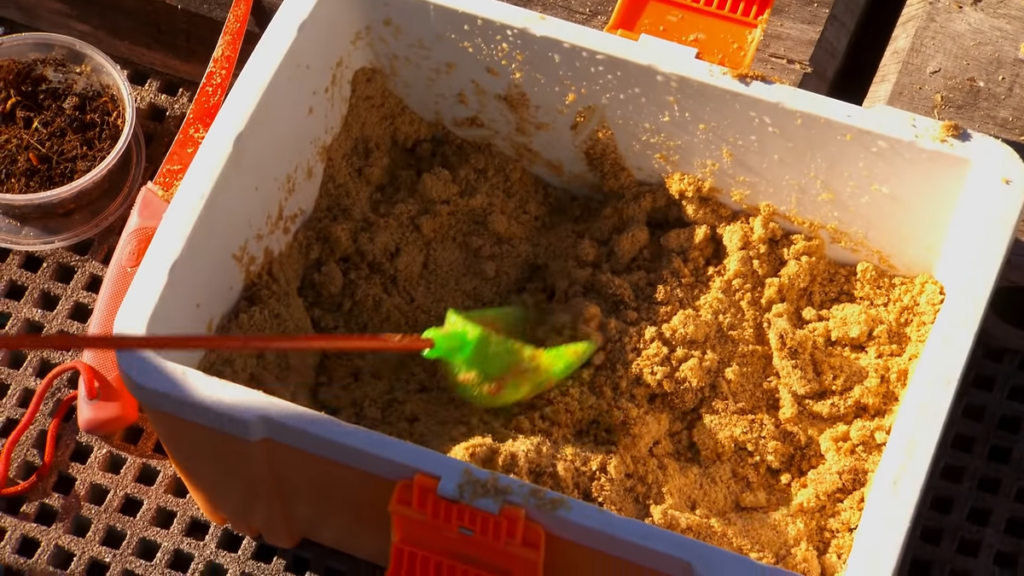
It’s also important not just rely on one form of burly either – mixing up different types such as pellets and cubes can help create a variety of scents which may prove attractive for different species depending on their individual preferences. Finally don’t forget about wind direction – if there’s no current present then consider adjusting your position slightly so that any scent trails created by your chosen form(s) of burely drift towards areas likely populated by potential targets rather than away from them.
By understanding how to best use these various forms of burley when jetty fishing, anglers can increase their chances at catching bigger specimens while having fun along the way.
Burley is a great way to attract fish and increase your chances of success. With the right bait selection, you can make sure that you have the best chance of catching a fish from the jetty.
Jetty Fishing Tip #12
Jetty Fishing Safety
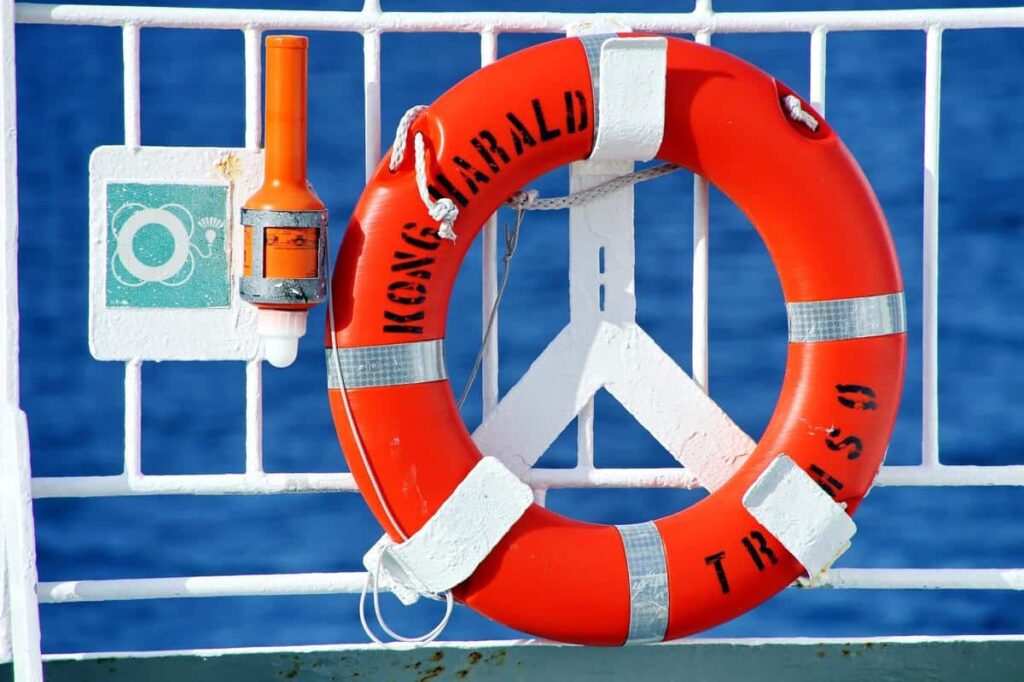
When fishing from a jetty, safety should always be your top priority. Jetty fishing can be an incredibly rewarding experience, but it also comes with certain risks that you need to be aware of.
Here are some tips for staying safe while fishing from a jetty:
Be Aware of Tides and Currents
The tides and currents around jetties can change quickly, so it’s important to stay up-to-date on weather conditions before heading out onto the water. Pay attention to any warnings or advisories issued by local authorities about strong currents or high waves—these could indicate dangerous conditions for jetty fishing.
Correct Footwear
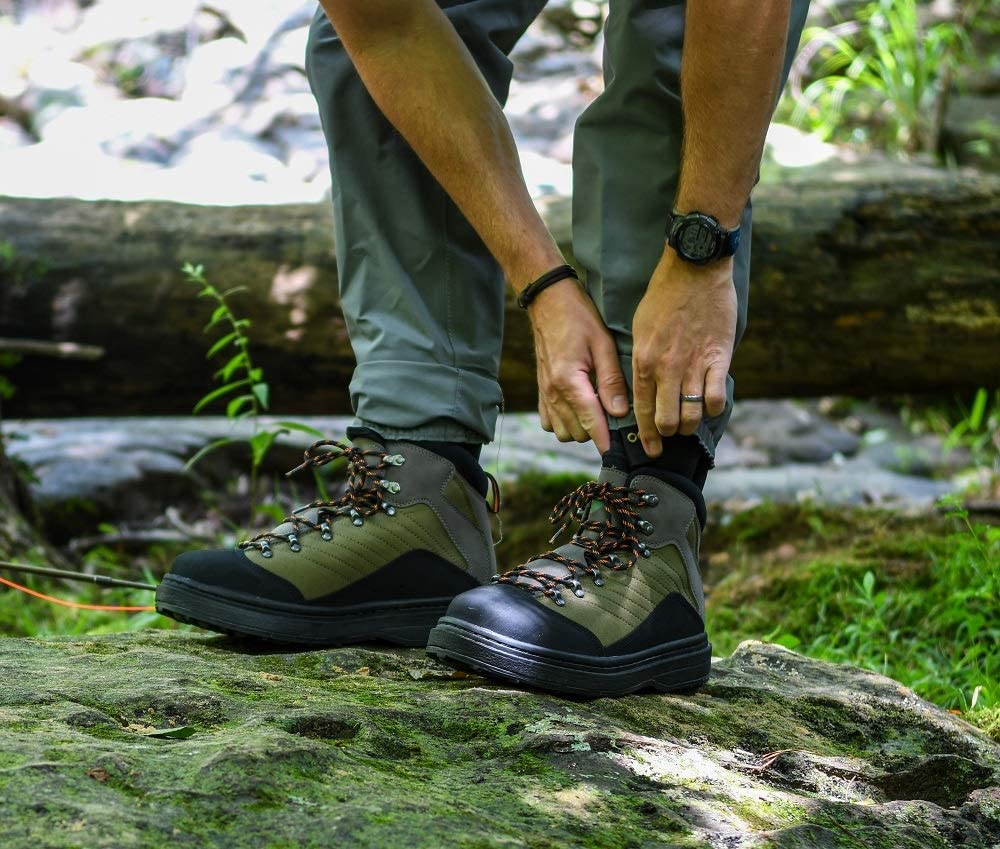
Jetties often have large rocks at their base which can cause serious injury if someone slips and falls into them while casting or reeling in their line. Be sure to watch your footing when walking along the edge of the jetty—it may even be wise to footwear with a good grip, such as non-slip boots.
Keep Space Between You and Other Anglers

When there are multiple people fishing off one jetty, make sure that everyone has enough space between them so as not to get tangled up in each other’s lines or hooks accidentally snagging each other. This is especially important when using lures, as they can travel farther than bait rigs.
Always Have a First Aid Kit Handy
Accidents can happen when fishing from a jetty and having a first aid kit nearby is always wise. Make sure your kit includes items such as band-aids, antiseptic wipes, and a few other basics to help treat any minor injuries that may occur.
When it comes to jetty fishing, safety should always be your top priority. Knowing the right precautions and techniques can help ensure that you have a successful and enjoyable experience on the water. By following these safety tips, you can ensure that your jetty fishing experience is an enjoyable one. Finally, let’s talk about etiquette.
Jetty Fishing Tip #13
Jetty Fishing Etiquette

Jetty fishing is a great way to get out on the water and enjoy some time with friends or family. But like any other type of fishing, there are certain etiquette rules that should be followed in order to ensure everyone has an enjoyable experience.
Here are some tips for jetty fishing etiquette:
Be Respectful
Jetty anglers should always respect their fellow fishermen by not crowding them or taking up too much space. If someone else is already using a particular spot, it’s best to find another place to fish instead of intruding on their area.
Keep It Clean
When you’re done fishing, make sure you leave the area as clean as when you arrived—that means picking up any trash and disposing of it properly. Not only will this help keep our waterways clean, but it also shows respect for your fellow anglers who may come after you.
Follow Regulations
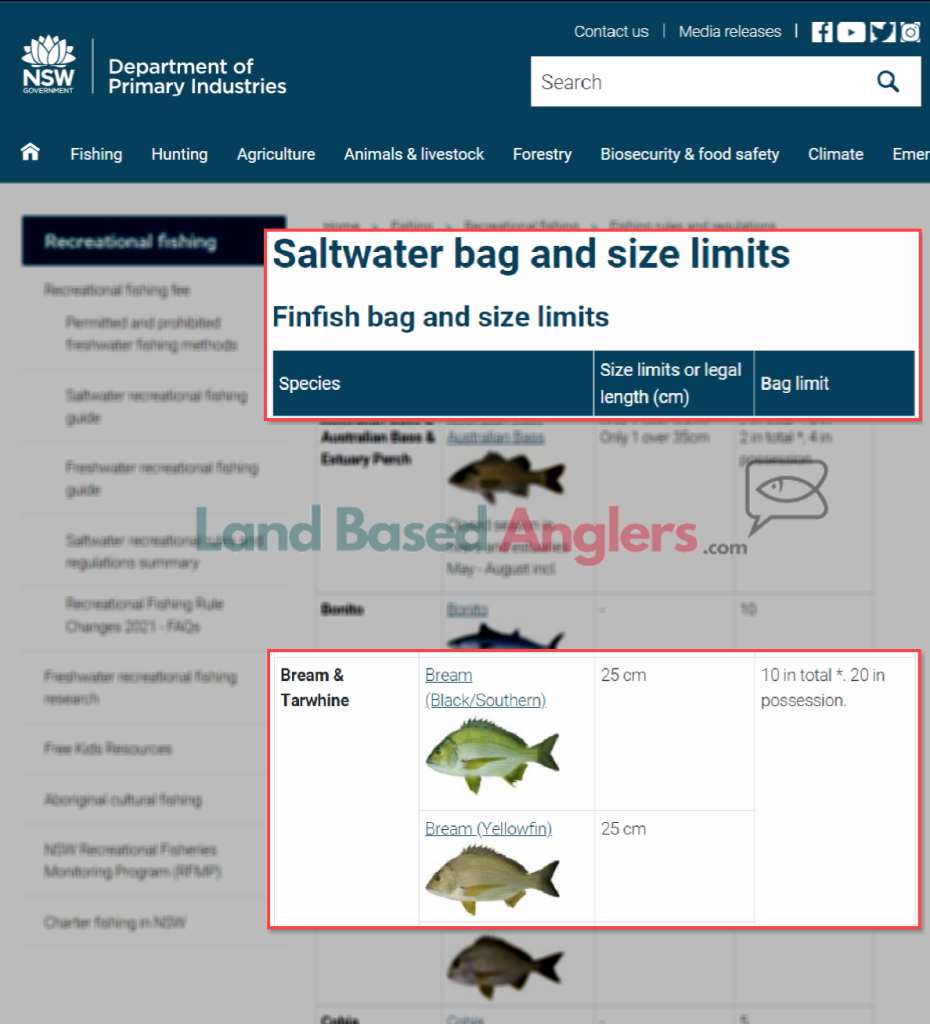
Make sure you familiarize yourself with local regulations before heading out onto the jetty so that you don’t accidentally break any laws while trying to catch dinner. This includes knowing size limits, bag limits, and season restrictions so that your catches remain legal at all times.
Share Information
Sharing information about what kind of bait or lures have been working can be incredibly helpful for other anglers looking for success on the jetty—so don’t hesitate to pass along your knowledge if asked. Of course, feel free to ask others what they think might work too; chances are they’ll be more than happy to share their expertise with you as well.
Last but not least, use common sense when fishing from a jetty. Don’t cast into areas where people could get hurt by errant hooks or lines; avoid leaving tackle behind; and never throw anything overboard, including fish guts. Following these simple guidelines will ensure everyone has an enjoyable time out on the water without putting anyone in danger.
Jetty Fishing – Final Thoughts
Conclusion

With the right jetty, gear, bait selection, and knowledge of fish species and habits you can have an enjoyable experience. By following these jetty fishing tips you will be well on your way to becoming a successful angler! So what are you waiting for? Get out there and start catching some fish!
Are you looking to become a better jetty fisherman? LandBasedAnglers.com is here to help! Our resources are designed with the beginner and experienced angler in mind, providing tips for everything from choosing the right gear to finding fish-holding structures near jetties. We’re also dedicated to helping you improve your fishing skills so that every outing can be successful and enjoyable.

Meet The Author
William O’Reilly is an Australian land-based fishing enthusiast. He discovered his passion for fishing from the shore as a child, when his grandfather would take him out on the water and teach him the ropes. He encourages others to try land-based fishing and believes it is a unique and sustainable way to connect with nature.
He also advocates for responsible fishing practices and conservation. His passion for land-based fishing led him to pursue a career in writing about it, sharing his experiences, knowledge and thoughts about the sport, and inspiring others to appreciate and explore it.
William O’Reilly
Contributing Author
You Might Also Like:
If you enjoyed reading this blog post on Jetty Fishing Tips, you might also be interested in:
- 10 Best Fishing Chairs: Catch Your Breath and Catch Your Fish
- 8 Best Fishing Split Ring Pliers for Serious Anglers
- 8 Best Braid Scissors: Snip Your Way to Fishing Success
- Hooked on Comfort: 5 Best Fishing Stools You Need to Try
- How to Catch Murray Cod: 12 Masterful Tips For Success
- How to Catch Australian Bass | 13 Proven Tips by Pro Anglers
- 10 Best Fishing Pliers All Anglers Need in Their Tackle Box
- How to Catch Bonito: 13 Amazing Tips from Master Anglers
- How to Catch Mangrove Jack: 5 Tips for a Successful Fishing Trip
- 10 Best Waterproof Dry Bags to Keep Your Gear Safe and Dry
Tags:
#Jetty Fishing, #Jetty Fishing Tips, #Jetty Fishing Guide, #Jetty Fishing Australia, #Jetty Fishing for Beginners, #Jetty Fishing Ultimate Guide, #Jetty Fishing Essential Tips,

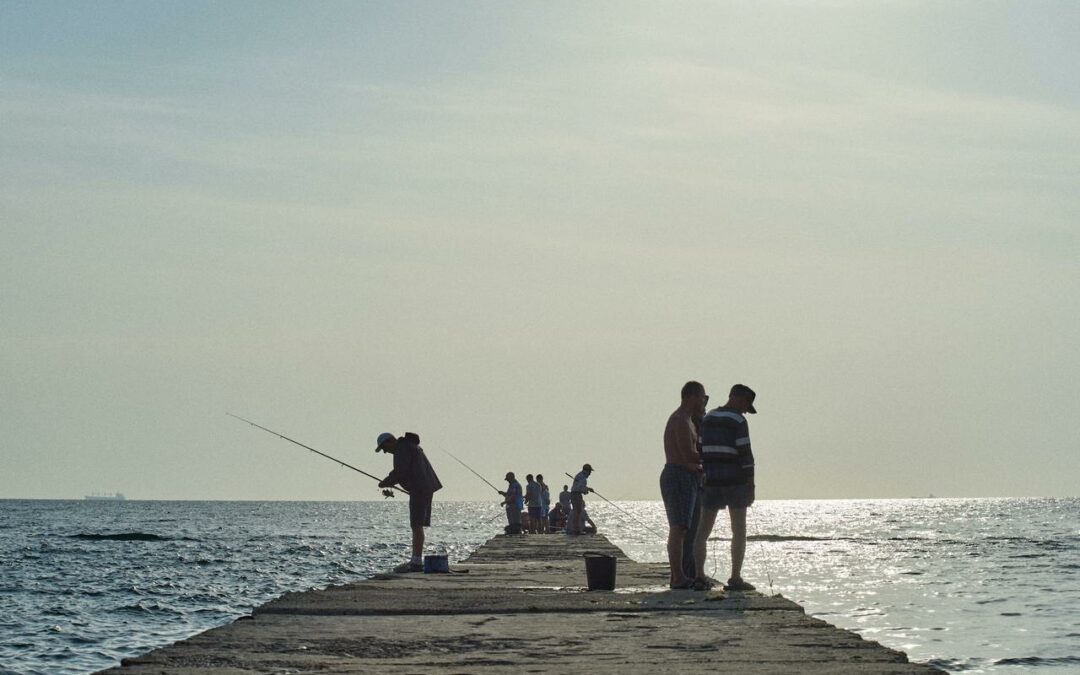
Recent Comments